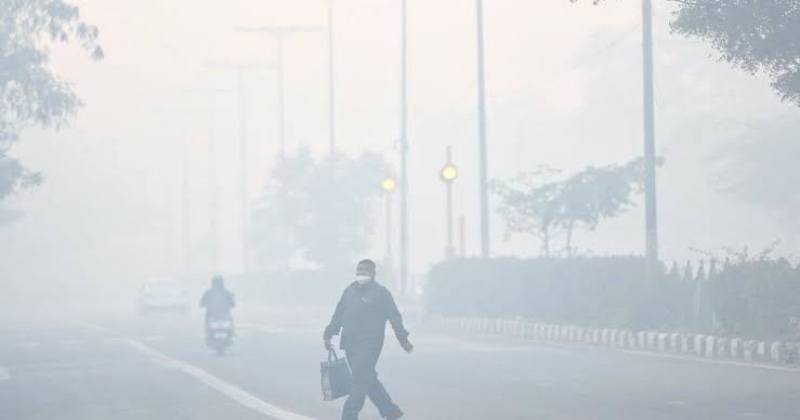
The air quality in Delhi and its surrounding areas deteriorated to the “severe” category once again, primarily attributed to the post-harvest burning of paddy straw in neighboring states. The city’s Air Quality Index (AQI) plummeted to 421, worsening from 395 at 4 pm the previous day. Despite a minor decrease, the concentration of PM2.5, fine particulate matter known for its ability to penetrate the respiratory system and trigger health issues, exceeded the government-prescribed safe limit of 60 micrograms per cubic meter by seven to eight times in the capital. It was a staggering 30 to 40 times the healthy limit of 15 micrograms per cubic meter set by the World Health Organization (WHO).
Numerous cities in the Indo-Gangetic plains also reported perilous air quality, including Ghaziabad (382), Gurugram (370), Noida (348), Greater Noida (474), and Faridabad (396). Data from the Decision Support System, a numerical model-based framework, revealed that stubble burning in neighboring states, particularly Punjab and Haryana, accounted for 37 percent of the air pollution in Delhi on Tuesday, and it was expected to be 33 percent on Wednesday.
In response to the worsening air quality, the Delhi government reinstated the odd-even scheme after four years, which will be in effect from November 13 to November 20. The scheme restricts cars from operating on alternate days based on their license plate numbers. In an effort to safeguard the health of schoolchildren, in-person classes in all schools, except for students in grades X and XII preparing for board exams, have been suspended until November 10.
The Ministry of Earth Sciences’ Air Quality Early Warning System predicts that the region is likely to experience severe air quality for the next five to six days. Prolonged exposure to such high pollution levels can lead to a range of respiratory and cardiovascular health issues. Stringent restrictions under the Central government’s Graded Response Action Plan (GRAP) stage IV have been implemented in Delhi, including a ban on construction activities and the entry of polluting trucks into the capital. These measures are put in place as part of a comprehensive strategy to combat air pollution during the winter season, which combines adverse meteorological conditions with various pollution sources. According to a Delhi Pollution Control Committee analysis, Delhi faces peak pollution levels from November 1 to November 15 due to the increased incidence of stubble burning in Punjab and Haryana. Delhi’s air quality consistently ranks among the worst in the world’s capital cities, and it has been associated with a significant reduction in life expectancy.

Post Your Comments